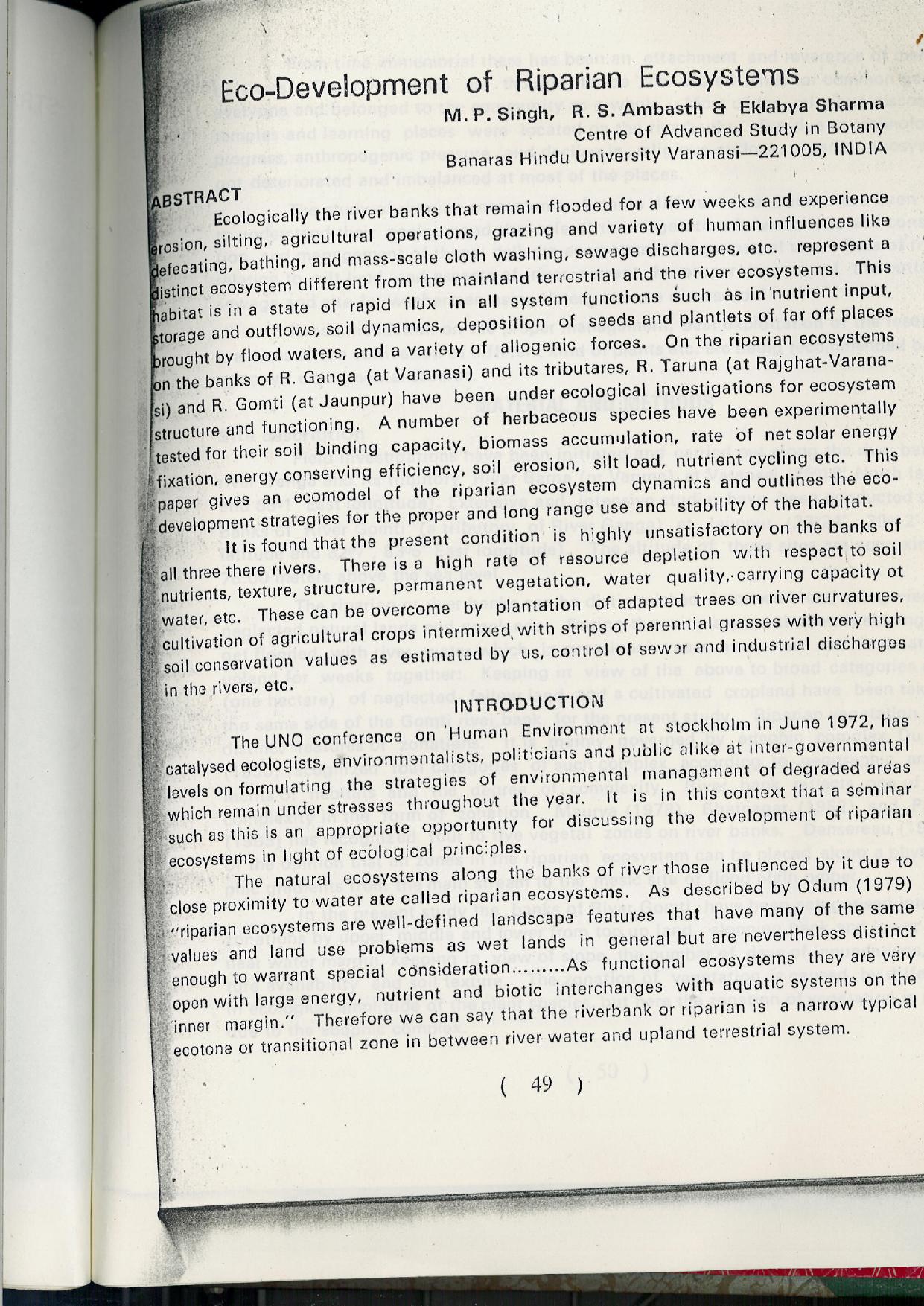Ecologically the river banks that remain flooded for a few weeks and experience erosion, silting, agricultural operations, grazing and variety of human influences like defecating, bathing, and mass-scale cloth washing, sewage discharges, etc. represent a distinct ecosystem different from the mainland terrestrial and the river ecosystems. This habitat is in a state of rapid flux in all system functions such as in nutrient input, storage and outflows, soil dynamics, deposition of seeds and plantlets of far off places brought by flood waters, and a variety of allogenic forces. On the riparian ecosystems on the banks of R.Ganga ( at Varanasi) and its tributares, R. Taruna ( at Rajghat- Varanasi) and R. Gomti ( at Jaunpur) have been under ecological investigations for ecosystem structure and functioning. A number of herbaceous species have been experimentally tested for their soil binding capacity, biomass accumulation, rate of net solar energy fixation, energy conserving efficiency, soil erosion, silt load, nutrient cycling etc. This paper gives an ecomodel of the riparian ecosystem dynamics and outlines the eco- development strategies for the proper and long range use and stability of the habitat. It is found that the present condition is highly unsatisfactory on the banks of all three there rivers. There is a high rate of resource depletion with respect to soil nutrients, texture, structure, permanent vegetation, water quality, carrying capacity of water, etc. These can be overcome by plantation of adapted trees on river curvatures, cultivation of agricultural crops intermixed with strips of perennial grasses with very high soil conservation values as estimated by us, control of sewer and industrial discharges in the rivers, etc.
